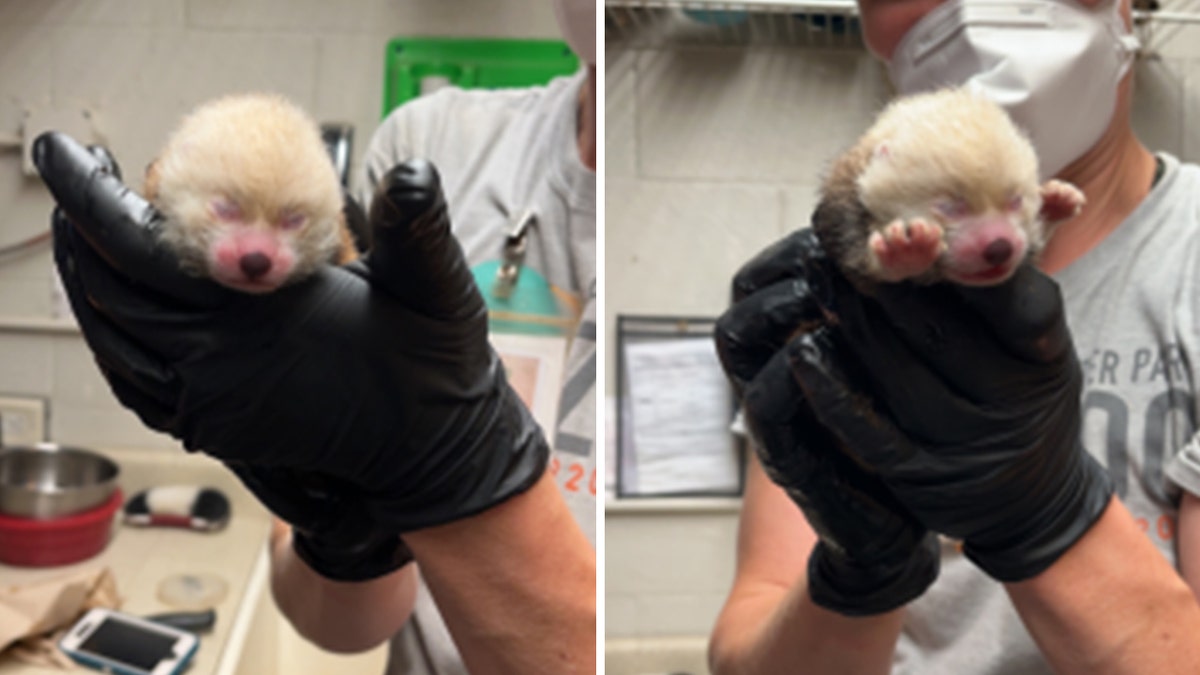Fox News Flash top headlines for August 11
Fox News Flash top headlines are here. Check out what's clicking on Foxnews.com.
A red panda cub has been welcomed with open arms at a Michigan Zoo.
Potter Park Zoo in Lansing, Michigan, helped its 8-year-old red panda, Maliha, deliver her precious cub in late July.
The birth is considered a significant win for the species, as red pandas are an endangered species, the facility wrote in a recent press release.
Fewer than 205 red pandas are accounted for in the Association of Zoos and Aquariums’ Species Survival Program.
COLUMBUS ZOO SAFELY LOCATES RED PANDA, KORA, THAT HAD VANISHED
Maliha’s cub, whose name has yet to be revealed, is considered "a valuable addition to the population," according to the Potter Park Zoo.

The Potter Park Zoo in Lansing, Michigan, welcomed a new red panda cub on July 21, 2022. The zoo formally announced the animal's birth in August. (Potter Park Zoo)
The cub is Maliha’s second successful litter she’s delivered in two years.
In a statement, the zoo’s Carnivore Area Lead Keeper Annie Marcum said, "Maliha is doing great. She’s an experienced mother and has been excellent with the newborn. The cub is actively nursing and growing at a healthy rate."
Maliha’s partner is Deagan-Reid, a red panda who was transferred from the Knoxville Zoo in 2021 to the Potter Park Zoo as part of the AZA’s Species Survival Program.
The program aims to maintain genetic diversity with careful animal pairing.
WORLD'S OLDEST MALE PANDA, AN AN, DIES AT AGE 35 IN HONG KONG
The mother and cub will be cared for out of the public's eye for a short time, but visitors will be able to see Deagan-Reid at his exhibit.
Red panda newborns are born deaf and blind and are small enough to fit in a human palm, according to the Potter Park Zoo.
It reportedly takes about two weeks for red panda cubs to open their eyes and about two months for them to venture outside their nests.
Experts estimate that less than 10,000 red pandas live in the wild.
Wildlife veterinarians at the zoo are monitoring the mother and cub through a hidden nest box camera.
Wellness checks and updates about the cub’s growth and development will be provided to the public in coming weeks, the zoo said.
NATIONAL ZOO CELEBRATES PANDA EXCHANGE PROGRAM'S 50TH ANNIVERSARY WITH TREAT
Fox News Digital reached out to Potter Park Zoo for comment.
Visually, red pandas appear similar to bears and raccoons.
Yet the small mammal is not closely related to either species, and it’s actually a part of the ailuridae family — an unspecialized carnivore species that originated in Europe and dispersed into Asia and North America.

Red pandas are native to Asia and live in temperate forests. They blend in with their environment with their red-brown fur, which also includes a ringtail pattern and tufts of white around their faces and ears. (Virginia Zoo via AP)
Red pandas are the sole survivors of this mammalian family tree.
Its closest relative — the long-extinct simocyon — was a puma-like creature that lived about 18 million years ago, National Geographic reports.
Experts estimate that less than 10,000 red pandas live in the wild throughout temperate forests in the Eastern Himalayas, according to the World Wildlife Fund.
CLICK HERE TO GET THE FOX NEWS APP
The red-furred and ring-tailed animal is currently protected in China, Nepal, Myanmar, Bhutan and India.
It can grow up to 24 inches in length, reach a weight of up to 17 pounds and usually live between 9 and 13 years.
Gestation periods last for about 135 days.
Red pandas typically give birth to one to four cubs at a time.

